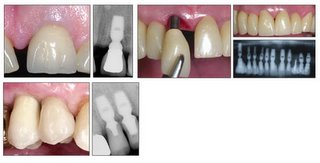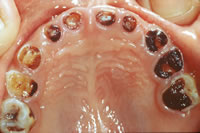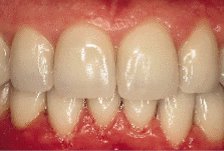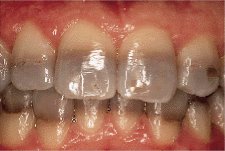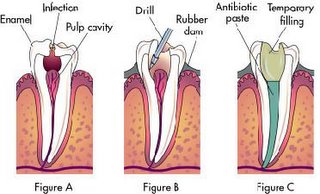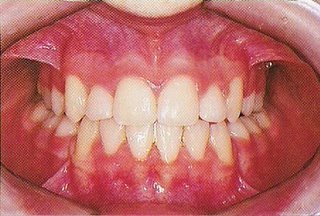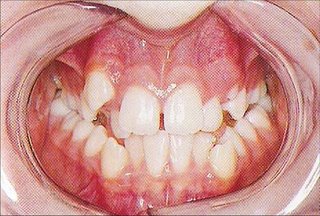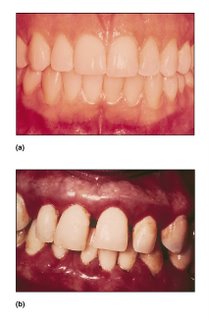
Mouth cancer can affect the lips, tongue, cheeks and throat. There are 4,400 new cases and 1,700 deaths every year in the UK, and those figures are increasing each year. Survival chances are much improved with early detection, so the number of deaths could be greatly reduced if people were more aware of the symptoms. The first sign of mouth cancer is often a non-healing mouth ulcer or a red or white patch in the mouth. It is important that you examine your own mouth on a regular basis. If you have a mouth ulcer that hasn’t healed after three weeks, or you notice any unusual changes in your mouth you should visit your dentist as soon as possible for an examination. Mouth cancer is most common in people over 40 who smoke or drink alcohol. It is also twice as likely to strike men as women. However, the number of young people and women developing the condition has been increasing in recent years. You can cut your risk of developing mouth cancer by living a healthy lifestyle.If mouth cancer is diagnosed in its early stages it can respond well to treatment and the chances of a complete cure are good. This is why regular dental check-ups are so important.
FAQ about Mouth CancerWhat is mouth cancer?
Most people have heard of cancer affecting parts of the body such as the lungs or breasts. However, cancer can occur in the mouth, where the disease can affect the lips, tongue, cheeks and throat.
Who can be affected by mouth cancer?
Anyone can be affected by mouth cancer, whether they have their own teeth or not. Mouth cancers are more common in people over 40, particularly men. However, research has shown that mouth cancer is becoming more common in younger patients and in women. There are, on average, over 4,300 new cases of mouth cancer diagnosed in the UK each year. The number of new cases of mouth cancer is on the increase.
Do people die from mouth cancer?
Yes. Nearly 1,700 people in the UK die from mouth cancer every year. Many of these deaths could be prevented if the cancer was caught early enough. As it is, people with mouth cancer are more likely to die than those having cervical cancer or melanoma skin cancer.
What can cause mouth cancer?
Most cases of mouth cancer are linked to tobacco and alcohol. Cigarette, cigar and pipe smoking are the main forms of tobacco use in the UK. However, the traditional ethnic habits of chewing tobacco, betel quid, gutkha and paan are particularly dangerous. Alcohol increases the risk of mouth cancer, and if tobacco and alcohol are consumed together the risk is even greater. Over-exposure to sunlight can also increase the risk of cancer of the lips.
What are the signs of mouth cancer?Mouth cancer can appear in different forms and can affect all parts of the mouth, tongue and lips. Mouth cancer can appear as a painless mouth ulcer that does not heal normally. A white or red patch in the mouth can also develop into a cancer. It is important to visit your dentist if these areas do not heal within two weeks.
How can mouth cancer be detected early?Mouth cancer can often be spotted in its early stages by your dentist during a thorough mouth examination. If mouth cancer is recognised early, then the chances of a cure are good. Many people with mouth cancer go to their dentist or doctor too late.
What is involved in a full check-up of the mouth?
The dentist examines the inside of your mouth and your tongue with the help of a small mirror. Remember, your dentist is able to see parts of your mouth that you cannot see easily yourself.
What happens if my dentist finds a problem?
If your dentist finds something unusual or abnormal they will refer you to a consultant at the local hospital, who will carry out a thorough examination of your mouth and throat. A small sample of the cells may be gathered from the area (a biopsy), and these cells will be examined under the microscope to see what is wrong.
What happens next?
If the cells are cancerous, more tests will be carried out. These may include overall health checks, blood tests, x-rays or scans. These tests will decide what course of treatment is needed.
Can mouth cancer be treated?If mouth cancer is spotted early, the chances of a complete cure are good, and the smaller the area or ulcer the better the chance of a cure. However, too many people come forward too late, because they do not visit their dentist for regular examinations.
How can I make sure that my mouth stays healthy?• It is important to visit your dentist at least once a year, even if you wear dentures. This is especially important if you smoke and drink alcohol.• When brushing your teeth, look out for any changes in your mouth, and report any red or white patches, or ulcers, that have not cleared up within two weeks.• When exposed to the sun, be sure to use a good protective sun cream, and put the correct type of barrier cream on your lips. • A good diet, rich in vitamins A, C and E, provides protection against the development of mouth cancer. Plenty of fruit and vegetables help the body to protect itself, in general, from most cancers. • Cut down on your smoking and drinking. Regular visits to your dentist could save your life.
